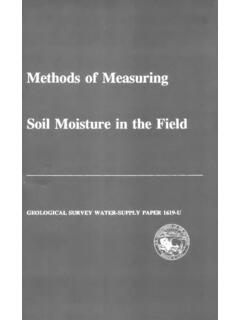Transcription of Larry Shaw Tuning Guidelines
1 Larry Shaw Race Cars Recomended Tuning Guidelines And Setup Sheet Please read before deciding what changes to make to your chassis All Tuning recomendations are based on starting at the baseline setup. Remember the amount of traction offered by the race track or the amount of traction due to what tires you use, will influence the changes you will make to your race car. Also dirt tracks offer up inconsistent surfaces, Example; the amount of traction that the left rear tire sees may be quite a bit different than the amount of traction that the right rear tire sees. There are basicly five types of race track surfaces we generally see these days and the Tuning methods we use will be different for each track condition. The five types of tracks are: Greasy Slimy, Heavy Tacky, Streaky has slick spots and traction spots on the track, Dry Slick or very little traction avalable and rubbered up tracks which are dry but the rubber from the tires is adhering to the track surface offering up alot of traction.
2 (Note: In the future I hope to have what setups generally works in what conditions) Race track configerations and Series rules will also dictate what setups work best for your race car. We currently have about 20 different tire rules avalable, accross the country. What setup works good on one tire may not work as well on a different tire. For this reason you must be willing to make changes to your car or how you drive the car to get the best results. Most cars are to tight on corner entry and the driver has to make the car turn by whatever means that are avalable to him. Which means most of the time the driver will break traction to get the car to turn and then the car is loose off the corner. In this instance fixing the tight on corner entry problem will also fix the loose exit problem. Always analize your car in this order and tune your car in this order also: 1: Corner Entry, 2: Middle of the Corner, 3: Corner exit.
3 Drivers are also part of the chassis Tuning equation. Drivers need to be aware that they have to change the way they drive. as the track conditions change during the coarse of a race night they will not be able to apply throttle , brakes or steering effort the same way at the end of the night as they did at the beginning of the night. Also drivers need to search around on the race track for other grooves that may be more favorable to their setup. Any of the following recommended changes will affect the chassis in the problem area listed. We have also incorporated a color coded guide to tell you which of the changes would be more suited for the given track conditions as well. The following is a list of the track conditions and the color that represents that track condition. Also some of the recommended changes would be more suited for small stop and go type tracks and some are more suited for faster momentum type tracks.
4 The (1) will represent a small stop and go type track and the (2) will represent a faster momentum type track. The best way to use this guide is determine the problem you have first then see what the track conditions are like and then determine if you are on a small stop and go type track or a faster momentum type track. If no number is listed beside the recommended change , then the change is suited for any race track size. Greasy/ Slimy Yellow * Heavy/ tacky lots of traction Green * Streaky Has slick and traction spots Blue * Dry Slick Very little Traction Red * Rubbered Up Dry but lots of Traction Usually on Exit of Corner Purple * This Tuning Guideline can be used for Late Models, Modifieds or B Mods Problem: Car is tight on corner entry, when on the throttle: Take Wedge out of Car * * 1 Add 1/2 in. wheel Spacer to Right rear * * * 2 Lengthen Right Side WheelBase (1/4 in.)
5 * * * 2 Soften RF Spring * * Increase Caster Split * * * Raise RR Upper Link on Chassis * * * 2 Move Ballast to the LF * * * 2 Stiffen RR Spring * * * * 2 Problem: Car is tight on corner entry, when off throttle: Add 1/2 in. wheel spacer to Right Rear * * * * 2 Lengthen Right side Wheel Base (1/4 in.) * * * 2 Raise J bar on Pinion ( 1/2 in.) * * 1 Add Wedge * * 1 Soften RR Spring * * 1 Stiffen RF Spring * * * 1 Stiffen Compression on LR Shock * * * * 1 Raise RR lower link on chassis * * * 2 Problem: Car is Loose on Corner Entry: Reduce Left Side % * * * Take Wedge out * * 1 Shorten Right Side wheelbase * * * 1 Stiffen RR Spring * * * * 2 Soften RF Spring * * * 1 Raise RR Upper Link on Chassis * * 2 Lower RR Lower Link on Chassis * * * Lower J bar on both sides ( 1/2 in.) * * Add Ballast in front of RR Spring up high * * * * Index into RR Spring ( 2 rounds top and Bottom) * * * 2 Problem: Car is loose in the middle of the corner Reduce stagger * * Lower Left rear Lower Link on chassis * * * 2 Shorten Chain (1/4 in.)
6 Increments) * * * * * 2 Note: as you shorten chain you may need to raise LR upper link on the chassis Also as you start shortening the chain you may have to go to stiffer rebound on the Left Rear shock. Shorten Rightside Wheelbase * * 1 Add 1/2 in. wheel spacer on the left rear * * 2 Add wedge * * 1 Problem: Car is tight in the middle of the corner Lengthen Right Side Wheelbase * * * 2 Add Stagger * * * 2 Raise LR Lower Link on Chassis * * * 1 Move LR wheel inboard 1/2 in. * * * * 2 Reduce Wedge * * 2 Put 1/2 in. wheel spacer on Right Rear * * * 2 Lengthen Chain (1/4 in.) * * * 1 Note: As you lengthen chain you might want to lower both the upper and lower trailing arms on the chassis one hole. Problem: Car is Tight on Exit Reduce Wedge * * * 2 Raise RR upper Link On Chassis * * * 2 Stiffen LR Spring * * * 1 Index out of LR Spring ( 2 rounds top and bottom) * * * * 1 Move pull bar to the Right * * Reduce Caster Split * Problem: Car is loose on Exit Add Wedge * * * 1 Soften LR Spring * * 2 Index into LR Spring (2 rounds top and bottom) * * 1 Add 1/2 in.
7 Wheel spacer on LR * * 2 Move Pull Bar to left on chassis and rearend * * * Add Caster Split * * Put new Pull Bar bisquits in * * * * * Problem: Car needs more Straightline drive but is good everywhere else * * * * Raise the pull bar on both ends ( Note: when moving pull bar up or down on rearend housing , you are Affecting the rate of the pull bar spring . Higher up on rearend will use softer Pullbar spring and lower on rearend will use stiffer pull bar spring. On Smaller Tracks Increase Rear % Put new Pull Bar Bisquits Tune pull bar rate to motor ,track conditions, and driver. If your car is busting the tires loose when you apply throttle . You will want to soften the pull bar rate . If the car is not busting the tire loose but is just not going forward , you would want to stiffen the pull bar rate. If the car feels like it is more on top of the track rather than down in the track.)
8 The car is more than likely not getting the weight transfered into the right rear tire patch early enough in the corner. This is a timing issue on when the tire patch accepts the load being transfered. Either moving more of the ballast towards the right rear corner or softening the compresssion valveing of the right rear shock will help correct this problem. There are hundreds of ways to tune your race car but these are just a few of the more influential changes that we have found. We will continue to strive to give our customers the best info we have avalable for them to have good results. Thanks Kevin Shaw Setup info for 02 13 4 bar Modifieds Shocks and Springs LF 74 600 RF (75 or 74 6 (650) UMP or Wissota) (RF 600 for IMCA or USMTS Rules) (Crate Engine cars we use LF 550 RF 550) LR (97 2 or 97 4 (200) RR 94 (175) Ride Heights Ride height is measured from the ground to the center of the lower a frame bolt on the front and from the bottom of the frame rail to the top of the birdcage on the rear.)
9 LF 8 RF 7 3/4 LR 11 1/4 RR 10 3/4 IMCA TIRES LF 8 3/8 RF 8 1/8 LR 11 RR 10 1/2 UMP TIRES LF 8 1/8 RF 7 7/8 LR 11 RR 10 1/2 WISSOTA TIRES These ride heights will change if using higher or lower wedge Settings. REAREND LOCATION Measure from inside of left rear frame rail to edge of Pullbar plate on Left on rearend. measurement is (11 1/4) ON ALL CARS Using Centered Rearend other than 35 series car. (ON 35 SERIES IF USING A CENTERED REAREND THE measurement IS 12 ) (ON 35 SERIES IF USING (+2 2 offset) REAREND THE measurement IS 10 ) Birdcage Locations and Clamp bracket locations on rearends for centered or Offset rearends is the same if using a 60 in. Rearend on Older cars and 35 series. From Inside of rotor to center of trailing arm on LR is: 6 in. From inside of rotor to center of trailing arm on RR is: 5 in. Birdcage shock and spring drop is : 6 in. drop on RR Spring 6 in.
10 Drop on LR spring. Front to rear spacing 5 1/2in. on both sides from Center of trailing arm to center of Slider or coilover. SOME GENERAL NOTES ON SQUAREING REAREND ON 3 link setups From the back of the axle tube to the back of the square tubing where trailing arms Weld onto the chassis will be (19 in. Both sides at ride height to be square.) With Any rear suspension (2 link or 4 bar). Check these measurements with driver in car. (Wissota trailing arm lengths will be 17 in. in middle of the plate on chassis) (Mount the Trailing Arm directly under the axle tube at 6 o clock Position on Wissota) (IMCA ,USRA trailing arm lengths will be 16 1/8 in. in middle of the plate on chassis) The IMCA USRA mounts on the rearend are 2in. forward of (centerline CL) and 2in. below CL. When mounting the clamp brackets on the rearend for Midwest Mods or Sport Mods Set pinion angle at 6 deg. And level clamp brackets on rearend.






